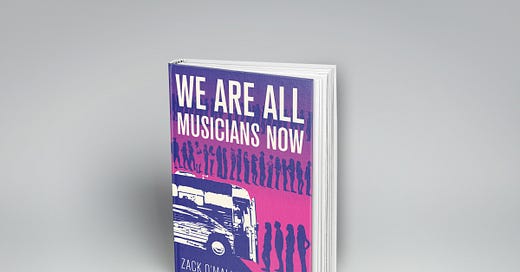We Are All Musicians Now: The Introduction
Artists are canaries in the coal mine of modern business, experiencing seismic tech disruptions years before those in other industries. Follow the music, see the future.
This is the introduction of my new book, We Are All Musicians Now. To make sure you don’t miss future serializations, subscribe here.
<< PREVIOUS CHAPTER << || TABLE OF CONTENTS || >> NEXT CHAPTER >>
One might say March 11th, 2021 was the final day of the most surreal 12 months in recent memory. Yet by nightfall, a pandemic-stricken world only seemed even…
Keep reading with a 7-day free trial
Subscribe to ZOGBLOG by Zack O'Malley Greenburg to keep reading this post and get 7 days of free access to the full post archives.





